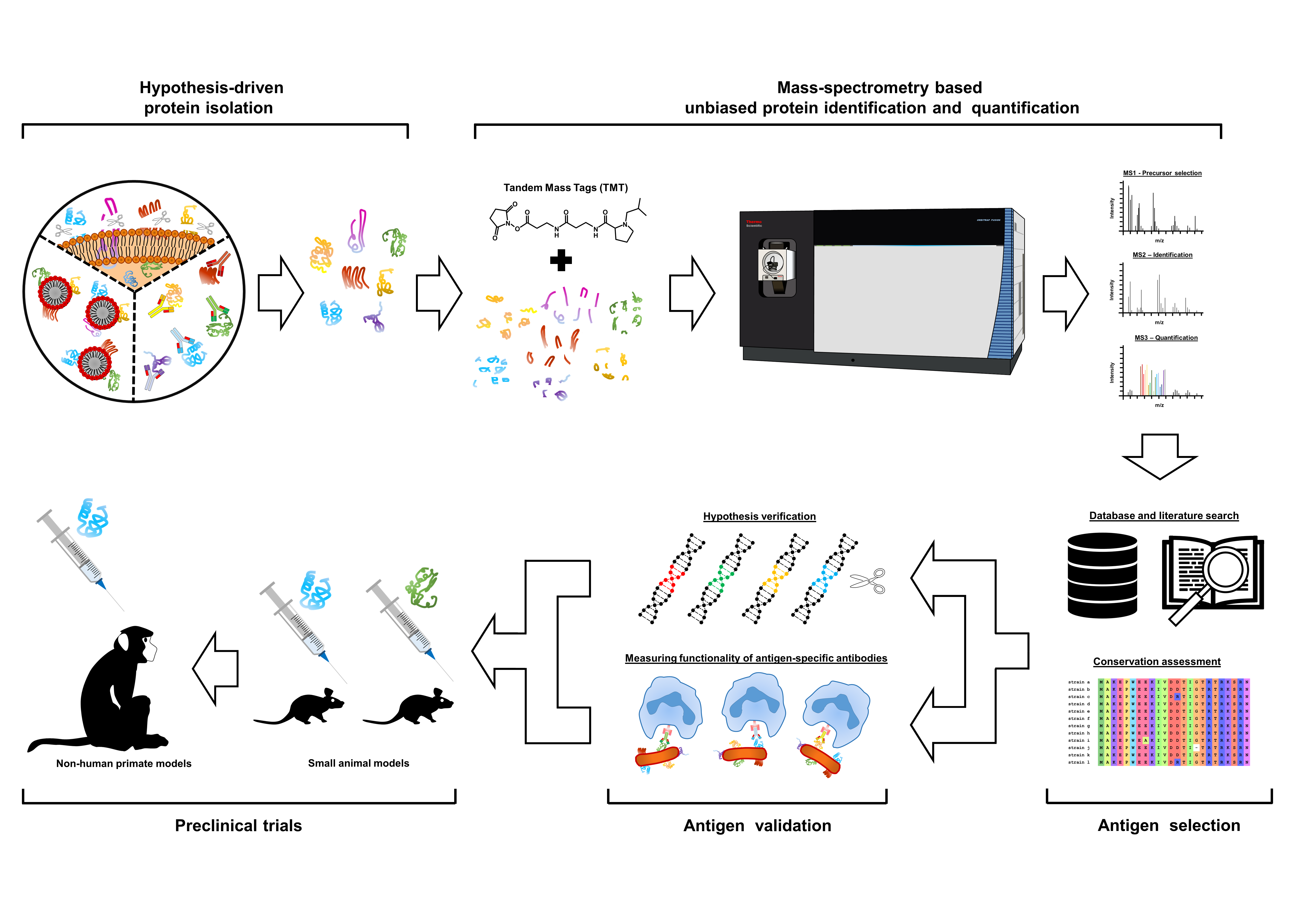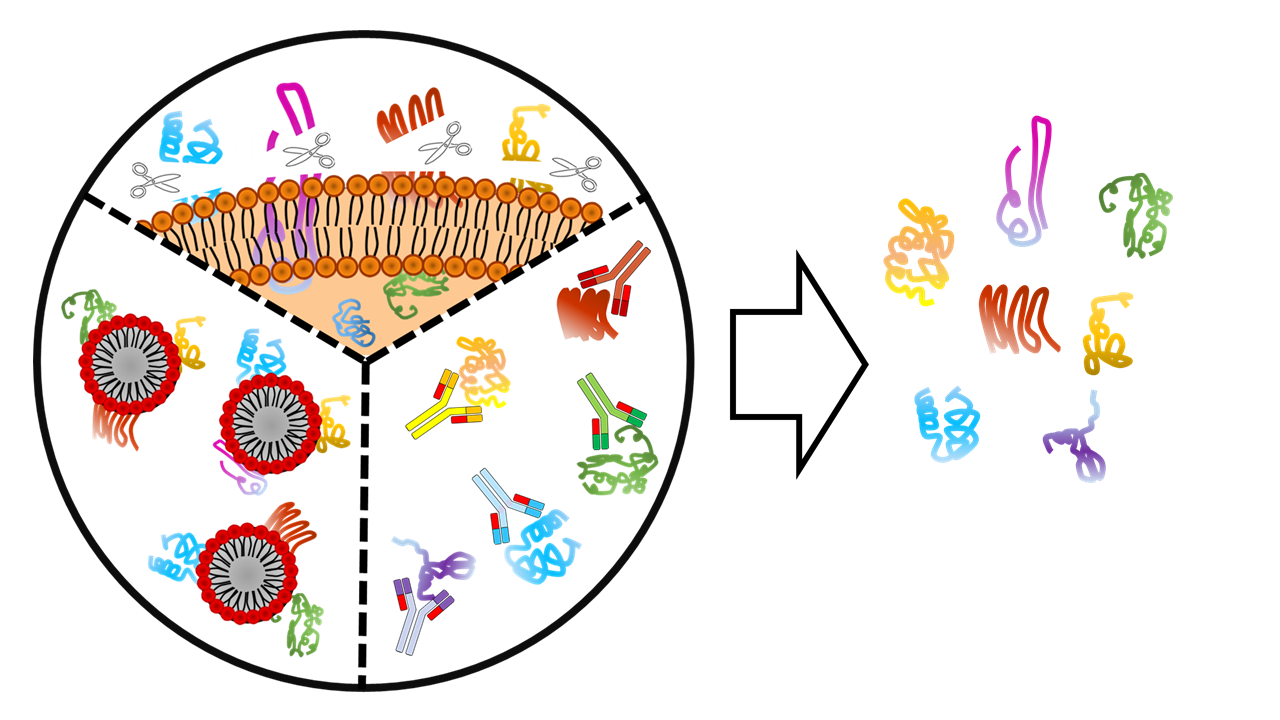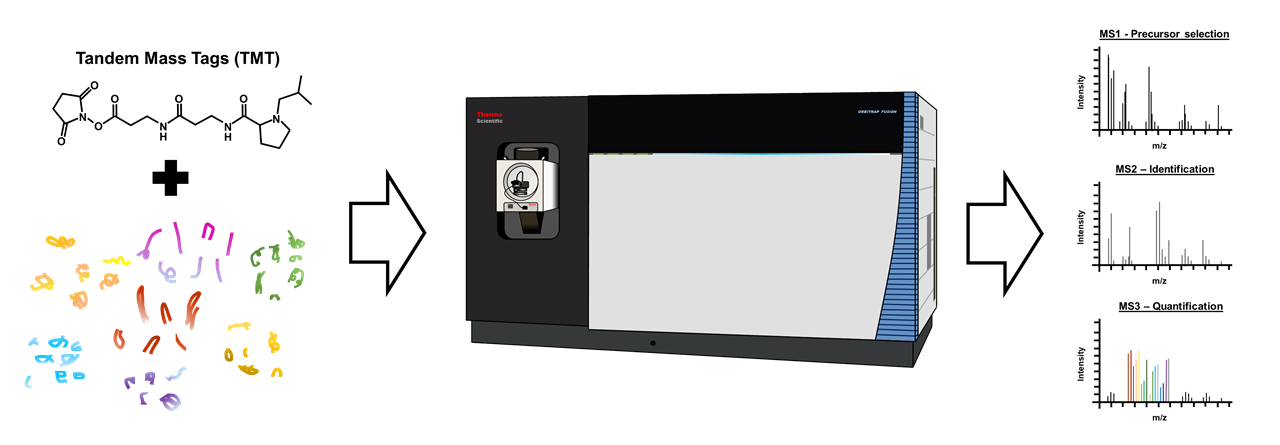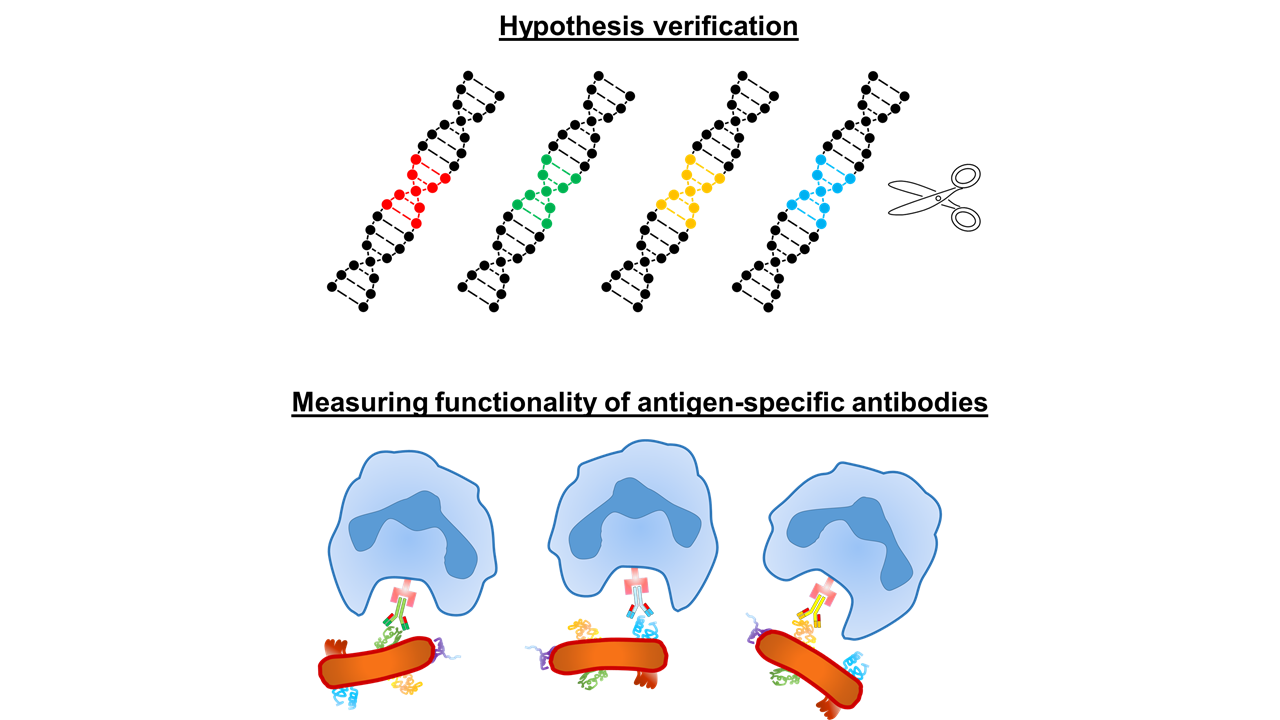Antigen Discovery Pipeline
Here at ID-Antigens, we combine our expertise in microbiology, genetic engineering, molecular biology tools, and proteomics to identify and validate novel vaccine antigens. Below you can find a step-by-step walkthrough of our discovery pipeline.

Step 1: Hypothesis Driven Protein Isolation

Our journey towards vaccine development starts with key scientific questions
What previously uncharacterized microbial proteins are involved in interaction with the primary sites of infections?
What proteins are commonly present at the surface of various strains of the pathogen?
What microbial proteins are recognized by the immune system of individuals that are resistant to infection?
The proteins in question are being isolated from the pathogen by the application of appropriate molecular biology tools and techniques.
Step 2: Unbiased Protein Identification

Using high-resolution mass spectrometry, isolated proteins are characterized by state-of-the-art biochemical techniques, which greatly expedites analytics for protein identification and quantitation.
Step 3: Antigen Selection

After the identification of the isolated proteins, a thorough database and literature search will be performed to define the current state of knowledge of the candidate. The most promising candidates are further selected based on their conservation among different isolates/strains of the pathogen.
Step 4: Antigen Validation

Following the antigen selection, we perform in parallel (1) verification of the starting hypothesis through a combination of genetic engineering, cell-based and biochemical assays, and (2) validation of generated antigen-specific antibodies for their ability to bind to the pathogen surface, neutralize the antigen, and facilitate clearance of the microorganisms by our immune cells.
Step 5: Pre-clinical Studies

Even though microbial proteins have been studied for decades, a significant portion of predicted microbial proteomes remains unidentified or uncharacterized. The role and importance of these proteins in the virulence of pathogenic microorganisms remains unknown and the therapeutic potential of these unexplored vaccine targets remains untapped.
